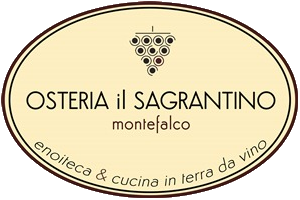Umbria is one of the 20 regions of Italy, with a surface area of 8,500 sq.mts. It is the only peninsular region without a coastline and the only region of the 20 not to share a border either with another country or the coast. The capital is Perugia and the provinces are Perugia and Terni. The other main cities are Foligno, Spoleto, Orvieto, Città di Castello and Gubbio. Umbria is the 4th least populated region in Italy, after Valle d’Aosta, Molise and Basilicata, with almost 900,000 inhabitants.
Geographically the territory consists mostly of hills and mountains, with four main flat areas: the Valle Umbra, the Middle and the High Valley of the Tiber and the Terni Basin. The northern and The Umbrian –Marche Apennine range marks the eastern border, with the highest peak being Mount Vettore which is also the highest point in the Sibillini mountain chain at 2,476mts above sea level. The region is crossed from north to south by the Tiber River with its numerous tributaries and it also has the fourth largest lake in Italy, Lake Trasimeno.
GETTING TO UMBRIA
With its central position, Umbria is easily reached by car from other parts of Italy, even though it doesn’t have motorways, other than a small section of the A1. From Rome to Terni, take the Via Flaminia and then follow the signs for Spoleto-Foligno-Gubbio. From Florence, the exit “Valdichiana” connects to the ring road “Perugia-Bettolle”, passing by Lake Traismeno and Perugia. From Le Marche, the newly completed highway SS77 connects Civitanova Marche to Foligno in less than an hour and is part of the so-called “Quadrilatero” road system, together with Ancona-Perugia which is in the final stages of completion. The highway E45 from Cesena-Orte crosses the region from north to south, connecting Città di Castello, Perugia, Todi and, Terni. The main airport of Umbria,“San Francesco d’Assisi” , in the small town of S.Egidio (Perugia), has flights to a number of national destinations and some international flights with low-cost companies.
Travelling by train is probably not the fastest way of arriving in Umbria, as there is no high-speed rail service, however, it nevertheless has a good network of connections. From Rome it is easy to get to Terni, Spoleto and Foligno, while Ancona can be reached from Gubbio and Foligno, and Perugia and the areas around Lake Trasimeno are easily reached from Florence. A daily intercity train service, leaving in the morning and returning in the evening, connects Milan with Terni, stopping in Spoleto, Foligno, Assisi and Perugia.
THE CLIMATE
In the areas away from the Apennines, the climate is sub-tropical, while further inland, it has a decidedly more continental edge, particularly in the Tiber High Valley. Winters are quite cold, with frequent morning frosts and the plains experience fog and moderate rain. Snow falls, rarely more than once or twice a year, on the major cities of the region, but it is usually just a light dusting. Spring and autumn are the wettest seasons of the year, but are mostly mild, especially the autumn, while spring can sometimes be decidedly cold, even through to mid April. Summer is dry and hot, particularly in the valleys and basins, with maximum temperatures sometimes reaching, but rarely exceeding 40°, and it is during these hot periods that the hills and mountains of the region provide some relief. Thunderstorms are frequent, particularly in June and these are often accompanied by hailstorms. Throughout the year winds from the mountains in the north, or from the east, are common, ensuring that the skies are clear and keeping smog levels low. In general, the climate in those parts of Umbria away from the Apennines is very pleasant and allows for tourism whatever the season.
The area through the Apennines is another story though, with a much less pleasant climate which is often cold and unsettled with frequent snowstorms and freezing temperatures. In the summer, thunderstorms are frequent and intense, but the beautiful days are characterised by very pleasant temperatures, contrasting with the intense heat in the lower zones. In spring, at least till April and sometimes beyond, it can still seem very wintery, while autumn is very wet and the first snow falls can appear at low levels from early November.
The best months in which to visit Umbria are May, September and October. The days are still long and are often sunny, and the temperatures are often perfect for touring activities, for eating outdoors and for sporting activities.
WHAT TO SEE
Umbria offers a wide range of attractions for visitors in its many CITIES OF ART, starting with the capital, Perugia and then on to, and in no particular order, the splendid Assisi, Orvieto, Spoleto, Gubbio, Todi and Norcia. No less important or stunning are the small medieval centres which represent the characteristics of this region: Spello, Bevagna, Montefalco, Trevi, Narni and Amelia. Perfect for a day trip or a romantic weekend visit, for couples or for families.
THE MOUNT SIBILLINI NATIONAL PARK is definitely the jewel in the crown for nature and wildlife, with the area of Castelluccio di Norcia being the driving force in the region, although it was unfortunately seriously damaged in the 2016 earthquake and is currently under reconstruction. However, a visit is still a must, especially during the summer months between May and October when the alpine climate is not as severe as the winter months – this area is at an altitude of more than 1200 metres. Some of the possible activities are trekking, mountain-biking, hang-gliding and in the winter months, skiing.
The UMBRIAN HILLS, as with those in Tuscany, are world famous for their gentle beauty, characterised by vineyards, olive groves, cypresses and ancient stone farm houses, all of which can be enjoyed on a tour by motorbike, car, or bicycle. Along the way, it is obligatory to stop for a tasting of local wine and food delicacies, above all, the famous wine, Montefalco Sagrantino and the salamis from the area around Norcia, from which the term “norcineria” is derived, as well as the black truffle in winter, which is also found in Norcia.
LAKE TRASIMENO is ideal for a sunny day in spring, with its islands of Polvere, Maggiore and Minore which is uninhabited. All these islands can be reached by a ferry service from the towns of Passignano, Tuoro or Castiglione del Lago, and are the perfect way of sampling the atmosphere of this great Umbrian lake.
FESTIVALS OF LOCAL CULTURE AND TRADITIONS
Every year in Umbria there are countless historic and cultural events to enjoy: the biggest event, which is also represented on the logo of the region, is without doubt, the “Corsa dei Ceri”, (Race of the Candles) in Gubbio. This festival takes place on the 15th March and involves transporting, in the fastest way possible, three enormous candles from the city centre to the Basilica of S.Ubaldo, the patron saint of the city, which is situated high on the mountain above the city, at an altitude of more than 800 metres. The three enormous and heavy candles, one for each district of the city, are made of wood and during the race they are held above the heads and carried by a veritable sea of enthusiastic locals enjoying the challenge.
In Foligno the “Giostra della Quintana” is held in June and September. This reenactment of a Baroque horse race from the 17th century sees horses and their riders representing the ten districts of the city as they follow a circuit in the shape of an “8” . The challenge is to take as many rings as possible with the lance, in the shortest time, over three laps of the circuit and if a ring is lost, a penalty is applied. On the night before the race, an historic parade through the streets of the city offers the chance of admiring the splendid, richly detailed baroque costumes worn by the proud citizens of each district.
In Assisi the festival called “Calendimaggio” welcomes the arrival of spring and is held every year on the first Wednesday, Thursday and Friday after the 1st of May. The city divides into its two parts, the Noble upper part and the Magnificent lower part in a challenge to win the Palio, (embroidered banner). The various events comprising the challenge consist of parades in medieval costumes, exhibitions recalling scenes from medieval life and musical recitals, all taking place through the streets and laneways of the town. Adjudicating the winner is a jury of internationally acclaimed experts composed of an historian, a musician and a personality form the world of theatre.
In Bevagna, the “mercato delle Gaite” is held in mid June and brings to life the medieval trades and crafts that once dominated the town.
In Trevi, during the month of October, called ”ottobre trevano”, a race between the three districts of the town is held, the “corsa dei Carri” , which involves pulling three heavy wooden carts, (one for each district), through the streets.
In Narni, as part of the festivities to honour their patron saint, Giovenale di Narni, which is celebrated on the 3rd of May, a medieval reenactment called the “corsa all’Anello” is held from the last week of April through to the second Sunday of May, the day on which the race takes place.
In Marsciano the event called the “Palio delle Botti” takes place in the second half of June.
In Amelia, the “Palio dei Colombi”, a horse riding challenge between the five districts of the town is held during the month of August.
CULTURAL EVENTS
Perugia plays host to UMBRIA JAZZ every year in July and attracts guest artists of national and international fame. There is a wide variety of live events both in concert halls and in the streets and piazzas of the city.
In Spoleto, from the last Friday of June, for a period of three weeks, the acclaimed FESTIVAL DEI DUE MONDI is held. Also simply known as the Spoleto Festival, this event has been an annual tradition since 1958 and it showcases the best of national and international music, art, culture and entertainment.
Every April, Foligno plays host to the FESTA DI SCIENZA E FILOSOFIA, with presentations and conferences on the theme of science and philosophy.
WINE AND FOOD EVENTS
Being the land of wine and food, there is an infinite variety of local festivals which are impossibile to list, but be sure that every evening through the summer months in Umbria, there is a celebration of wines and food to enjoy.
There are two major events on the food and wine calendar: CANTINE APERTE (open cellars), which is held every year on the last Sunday of May and FRANTOI APERTI (open oil mills), at the beginning of November. Other important events to note are: the recently established ONLY WINE which is held in Città di Castello at the end of April, VINI NEL MONDO (wines in the world), in Foligno, also held at the end of April, and the great festival of pasta, and more at the PRIMI D’ITALIA during the last weekend of September, and also in Foligno.
In conclusion, the tourist who chooses to visit Umbria will definitely not be bored, especially in the months between April and October. It is impossible not to fall in love with this little region that is the real green heart of Italy.
Tourism in this area is not just about the beauty of the ancient villages, but also to a great extent about wine, the real emblem of the district thanks to the native Sagrantino. ( Read more in the dedicated section).
You absolutely mustn’t miss a visit to Montefalco, a true medieval jewel in the midst of vineyards and olive groves.






